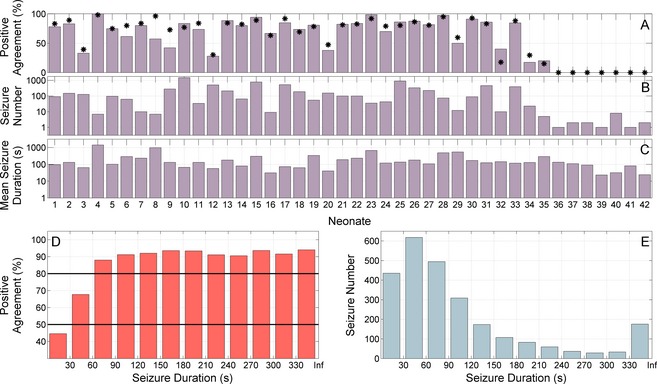Figure 3.

The decrease in interobserver agreement due to seizures with rare occurrence or short duration; in total and on a per neonate basis. (A) The positive agreement (event‐based assessment) per neonate in those with seizures annotated by at least one observer (n = 42). The agreement was reduced in neonates with a limited number of seizures, particularly if these seizures were of short duration. The black asterisks are the kappa value (expressed as a percent) for each neonate. Neonates 1–33 had annotations from all 3 observers, neonates 34–35 had annotations from 2 observers (n = 2) and neonates 36–42 had annotations from 1 observer (n = 7). (B) The number of seizures in each neonate (plotted on a logarithmic scale, base 10). (C) The mean seizure duration in each neonate (plotted on a logarithmic scale, base 10). (D) Positive agreement rate with respect to seizure duration summarized across all seizures. Observers were more likely to disagree if the seizure duration was less than 30 sec. (E) The number of seizures with a given seizure duration. All measures are averaged across observers. For (D and E) the last bin of the histogram contains seizures of duration greater than 330 sec (Inf is infinity).
